
Photo courtesy of SCAD FASH Museum of Fashion + Film.
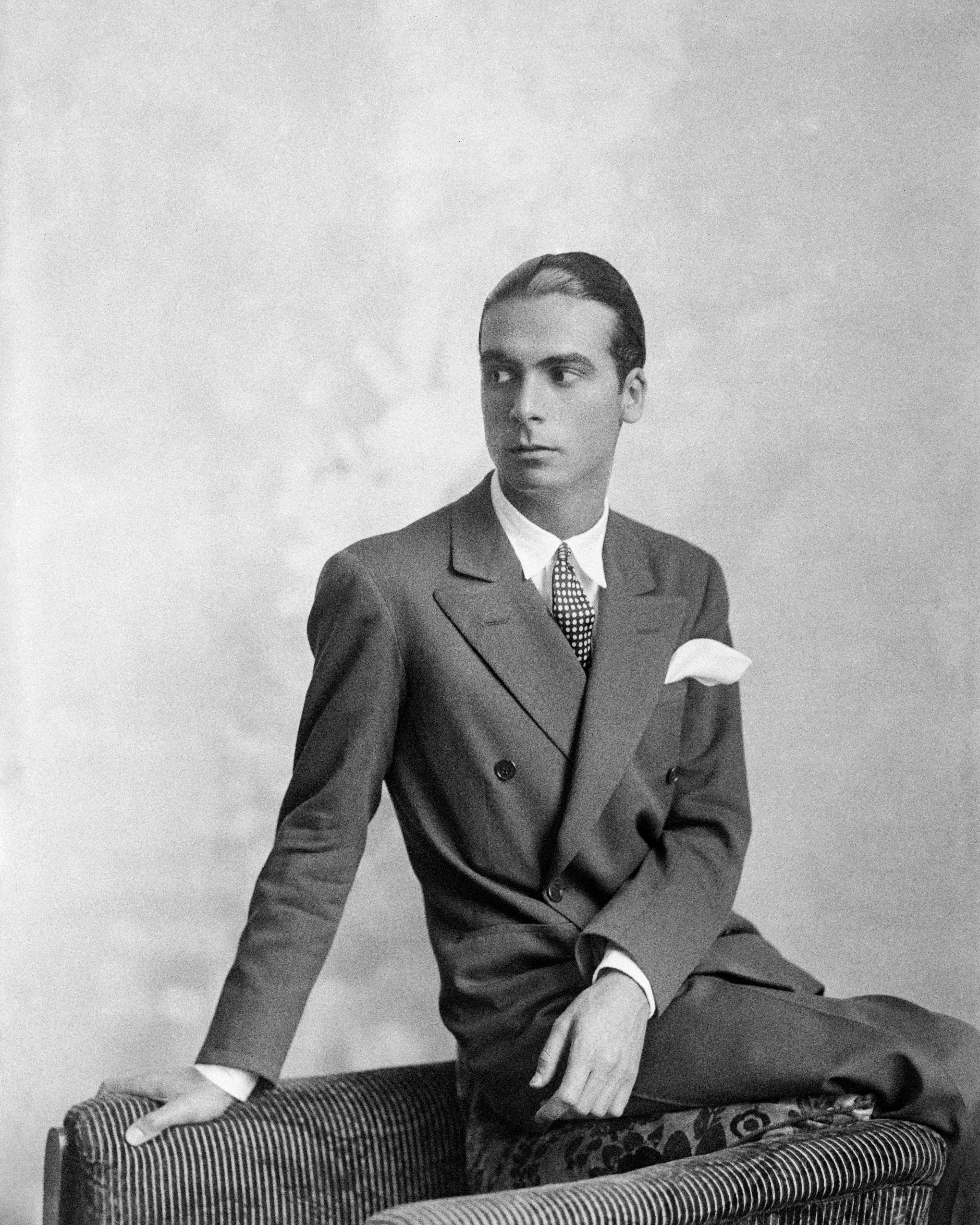
Portrait of Cristóbal Balenciaga. Photo courtesy of SCAD FASH Museum of Fashion + Film.
A far cry from the splashy, made-for-Instagram fashion shows of today, the presentations of Cristóbal Balenciaga’s mid-century atelier — 200-garment collections which frequently lasted for three hours — resembled something closer to a practice of ascetic study. Even amongst his prestigious couture contemporaries, such as Pierre Balmain or Christian Dior, Balenciaga’s protracted and meditative approach was exceptionally rare. During these showcases, high-society clients and fashion editors would watch, captivated, as models (or “mannequins,” as they were officially titled) discreetly brandished small, numbered cards that corresponded to the Balenciaga design they wore, parading slowly and silently through the ivory-colored rooms of the couture house’s tranquil Parisian salon. The reasoning behind such a focused, if not austere, approach was simple: to allow the subdued mastery of the couturier’s work to stand alone as its own kind of sartorial monologue.
Cristóbal’s impeccable craftsmanship — perennially revered for creating a radically new, ‘fluid’ silhouette for the 20th-century woman — is bound within the legacy of the French couture house. This very ethos is being brought stateside to the SCAD FASH Museum of Fashion + Film in their new exhibition, Cristóbal Balenciaga: Master of Tailoring. Curated exclusively for the Savannah College of Art and Design’s Atlanta campus, the show includes over 30 rarely-seen and bespoke archival garments, drawings, and photographs alongside original atelier communications that trace the arc of the late designer’s foundational creative direction in Balenciaga’s halcyon days, from the late 1940s to late 60s. To note, the show is one of the few of its kind to reach the U.S. — the last major American exhibition centered solely on the master tailor’s legacy was at the 1973 Met Gala with The World of Balenciaga, curated by Diana Vreeland, former Vogue editor-in-chief and special consultant to the Costume Institute.

Photo courtesy of SCAD FASH Museum of Fashion + Film.

Photo courtesy of SCAD FASH Museum of Fashion + Film.
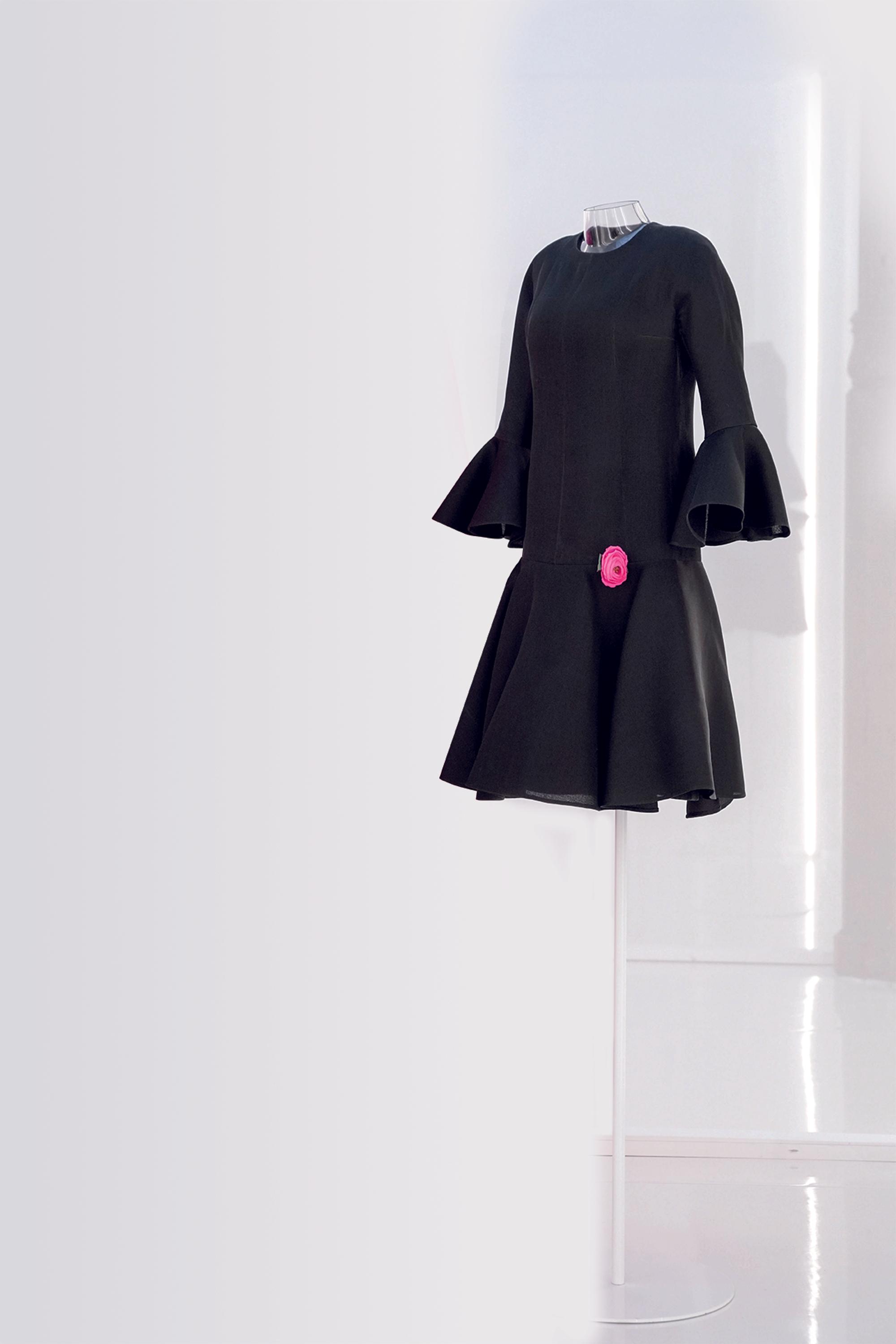
Photo courtesy of SCAD FASH Museum of Fashion + Film.
SCAD is calling forward this very legacy to a contemporary audience, bringing together curatorial collaborations between the Fondation Azzedine Alaïa’s curator Gaël Mamine (the exhibition includes garments from Alaïa’s personal archive of Balenciaga garments), head of Balenciaga Heritage archives Gaspard de Massé, director of Parodi Costume Collection Gonzalo Paradi, and creative director and curator at SCAD FASH Rafael Gomes. Jointly, Cristóbal Balenciaga is a precise celebration of the couturier’s groundbreaking innovations in clothing construction and design.
The son of a seamstress, Cristóbal Balenciaga (1895–1972) was raised in a small fishing town in Spain’s Basque country, where his self-taught and prodigal sewing talents allowed him to work for his family’s business at a young age. Showing an intensely serious artistry in his teenage years and a deft expertise in cutting and draping, Balenciaga quickly ascended to the title of master tailor. This prompted a move to Madrid to operate his own boutique, EISA (named after his mother), where he began designing for the Spanish royal family.
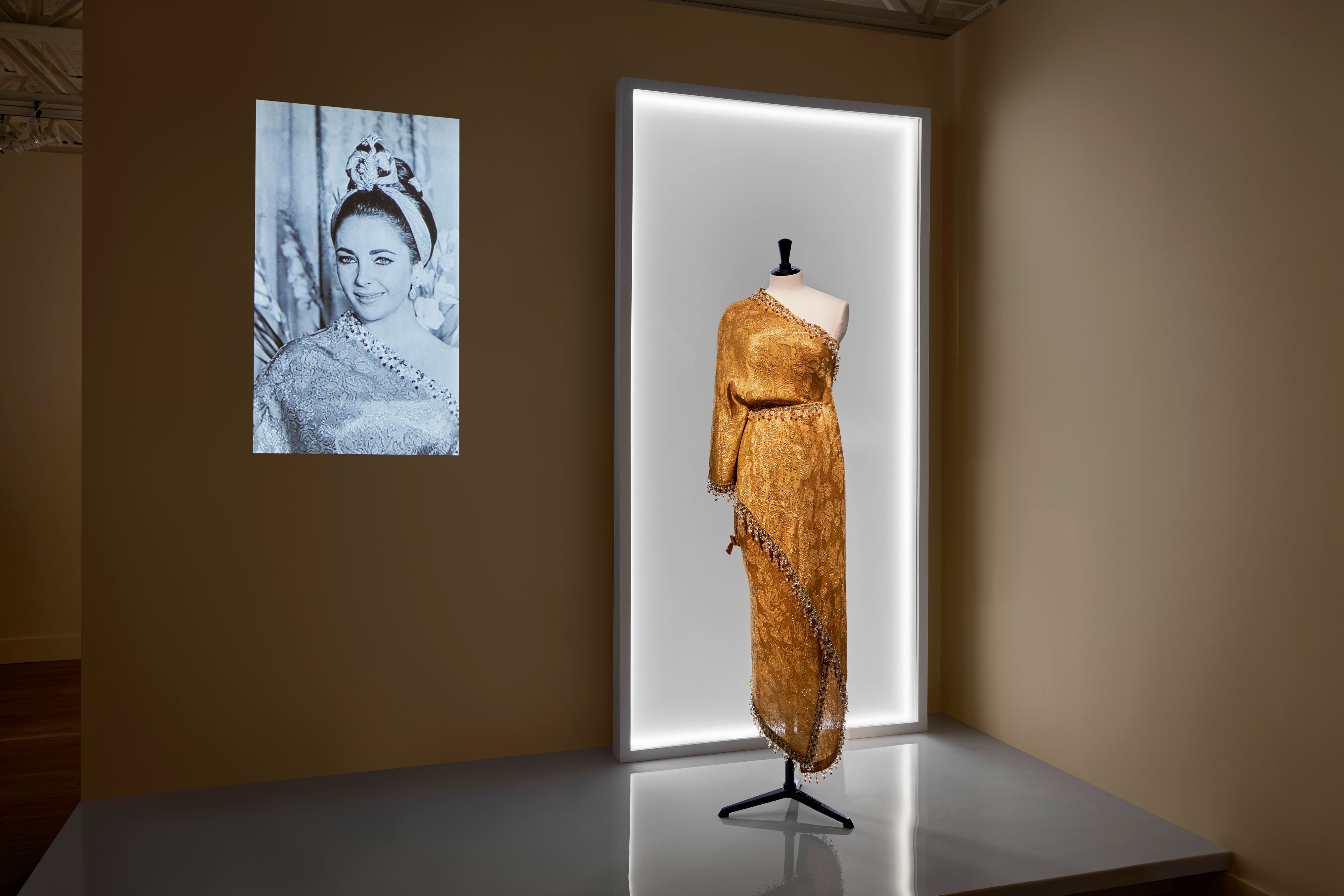
Install view of the Cristóbal Balenciaga retrospective at SCAD FASH. Photo courtesy of SCAD FASH Museum of Fashion + Film.
At the onset of the Spanish Civil War in 1937, Balenciaga shifted his work to Paris, opening his beloved couture atelier on Avenue George V. It was here, in the postwar years, that Balenciaga created his most seminal silhouettes and garnered an impressive clientele of high-society women, Hollywood actresses, and European royalty. Distinctive for starting his garments with fabric prior to sketching and planning, the couturier’s designs differentiated themselves from the Edwardian and rigidly hourglass A-line of Christian Dior’s “New Look.” Instead, Balenciaga emphasized a streamlined and linear design; freeform, flowing silhouettes which gave him a greater ability to alter according to his client’s bodies for a more ergonomic, individualized fit. In her introduction for the 1973 exhibition catalog for the Metropolitan Museum of Art, Vreeland describes this architectonic precision, writing that, “Balenciaga brought the body and dress together in harmony,” so that, “suddenly a woman found herself in perfect rhythm with the universe.” Balenciaga’s pioneering experimentations with dropped and raised waistlines resulted in iconic, groundbreaking structures such as the tunic shift, empire-waisted baby doll, puffy balloon skirt, cocoon coat, and waistless ‘sack’ dress — elegant forms that nod to the flamenco dancers, Catholic monks, churches, and fishermen of his Spanish youth, and are still present in the garments we wear today.
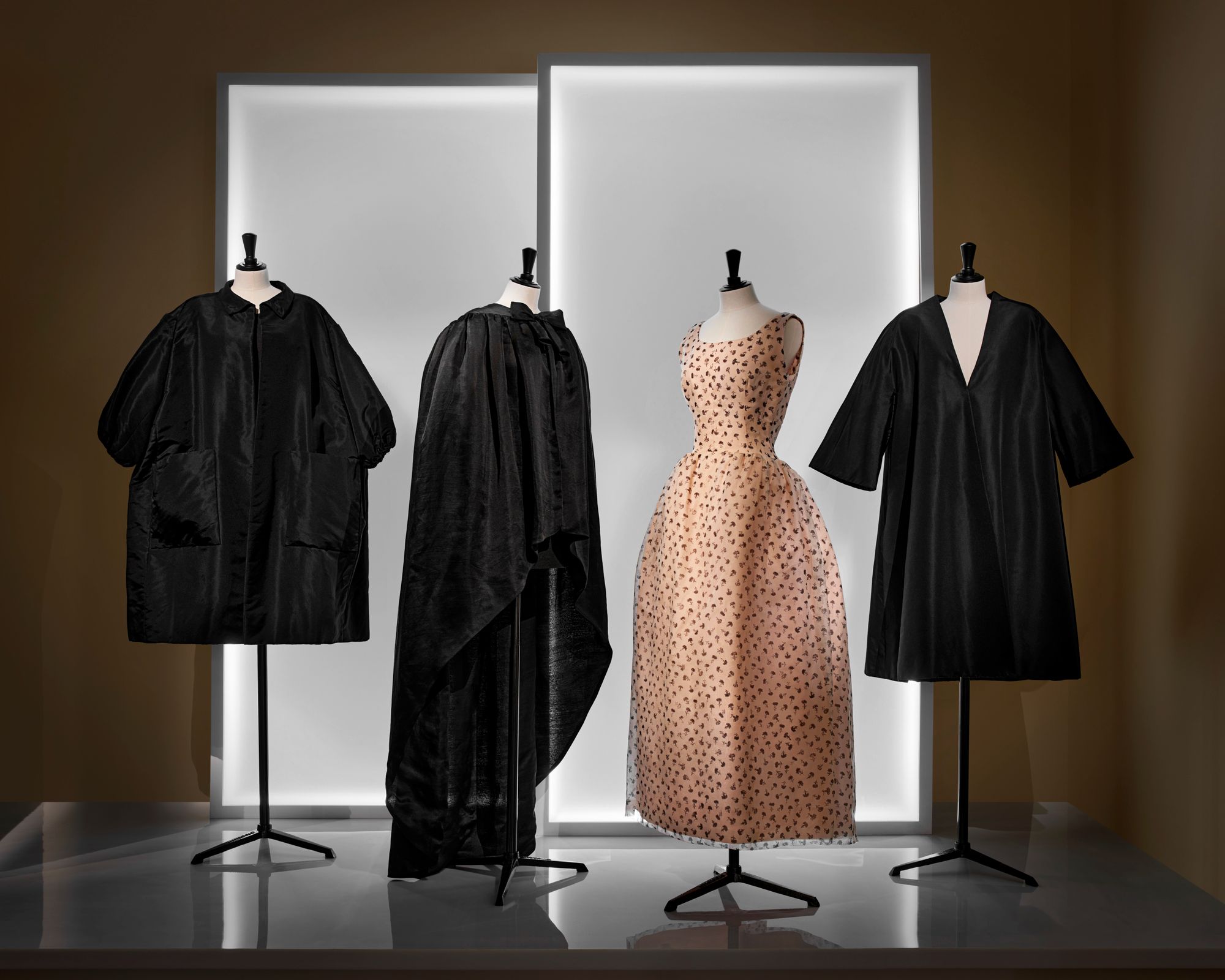
Install view of the Cristóbal Balenciaga retrospective at SCAD FASH. Photo courtesy of SCAD FASH Museum of Fashion + Film.
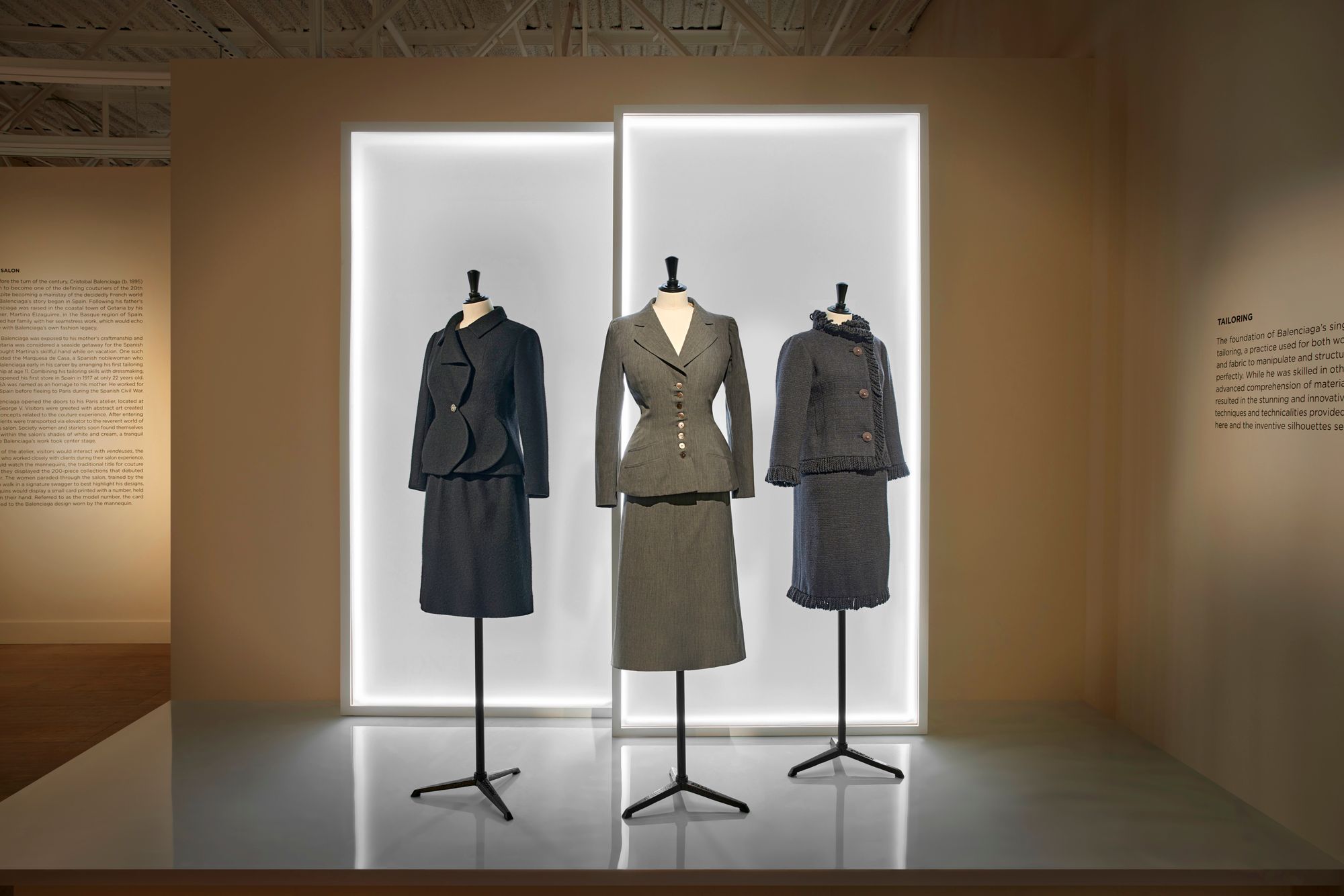
Install view of the Cristóbal Balenciaga retrospective at SCAD FASH. Photo courtesy of SCAD FASH Museum of Fashion + Film.
“There was a lot of perfection in Balenciaga’s techniques, and a sense of timeless creation. It was really radical in its form, and [how it wore] on the body. But also, some pieces are quite funny,” explains Cristóbal Balenciaga co-curator Gaspard de Massé. “There is humor in the silhouettes; a balance with accessories and the garments that are very beautiful and sensual but have elements of joy and play,” he says. This spirited dichotomy between architectural meticulousness and abstract, futuristic elements of asymmetry are tangibly manifest in the exhibition. Flush with exceptional garments, Cristóbal Balenciaga includes some of the master’s seminal silhouettes: in one display, a creamy white silk number composed of a strapless evening gown and a matching U-cut capelet evokes the traditional garb of altar boys in the choir. In another, a one-shouldered tunic, rendered in burnt sienna jacquard silk and adorned with transparent rhinestones, sequins, and pearls, holds an undeniable — almost queenly — glamor, immediately drawing the eye in. Custom-fit for Dame Elizabeth Taylor’s attendance to a Parisian fête, the dress is a stunning archival example of Balenciaga’s adoration of the feminine form.
Given how much the Balenciaga house has explored pioneering designs through its various eras, the archival exhibition provides necessary historical grounding to better contextualize its most current iteration under the creative direction of Vetements’ founder Demna Gvasalia. For the curators, the show is an “invitation to discover what a couture house in Paris is, and also to understand the Renaissance of the Balenciaga atelier from the 1930s to now. But it is very much still the same,” Gaël Mamine explained to me while we walked through the show. “The house still runs in the same ways: working with one’s hands directly with fabrics, even with the [modern] use of 3D computer technology. Couture is the keyword, as it is something very specific to design. It’s important to reveal this to the public and to the students of SCAD.” Balenciaga shifted the paradigm of form by means of visionary imagination and engineering, challenging the parameters of what clothing could be. For contemporary designers and architects, the lauded work exhibited in Cristóbal Balenciaga remains a shining example of real human innovation and its groundbreaking amplitude.

Install view of the Cristóbal Balenciaga retrospective at SCAD FASH. Photo courtesy of SCAD FASH Museum of Fashion + Film.

Install view of the Cristóbal Balenciaga retrospective at SCAD FASH. Photo courtesy of SCAD FASH Museum of Fashion + Film.

Install view of the Cristóbal Balenciaga retrospective at SCAD FASH. Photo courtesy of SCAD FASH Museum of Fashion + Film.
More so, debuting these archival works to an American audience is significant, as the realm of the couture fashion system — per ordinance by the Chambre Syndicale de la Haute Couture Parisienne — looms largely beyond cultural immediacy. Most American fashion (even of the haute varietal) circulates exclusively within two ready-to-wear collections a year, whereas couture requires up to six; more so, only two U.S. designers, Main Rousseau Bocher of Mainbocher and Ralph Rucci, ever achieved the demanding stakes of French couture.
Nonetheless, Cristóbal Balenciaga’s global impact remains omnipresent: though the intensely private designer closed his couture house in 1968 after several incredibly prosperous decades, and passed away in 1972, the brand saw a triumphant new return under Nicolas Ghesquière’s creative direction in 1998. Ghesquière created the now-ubiquitous Motorcycle Lariat bag, and the house experienced another massive revitalization under Demna Gvasalia’s current direction. As Cristóbal Balenciaga: Master of Tailoring shows us, the boundary-pushing legacy of a true savant remains plainly manifest: we only need to look in our own closets to be reminded.
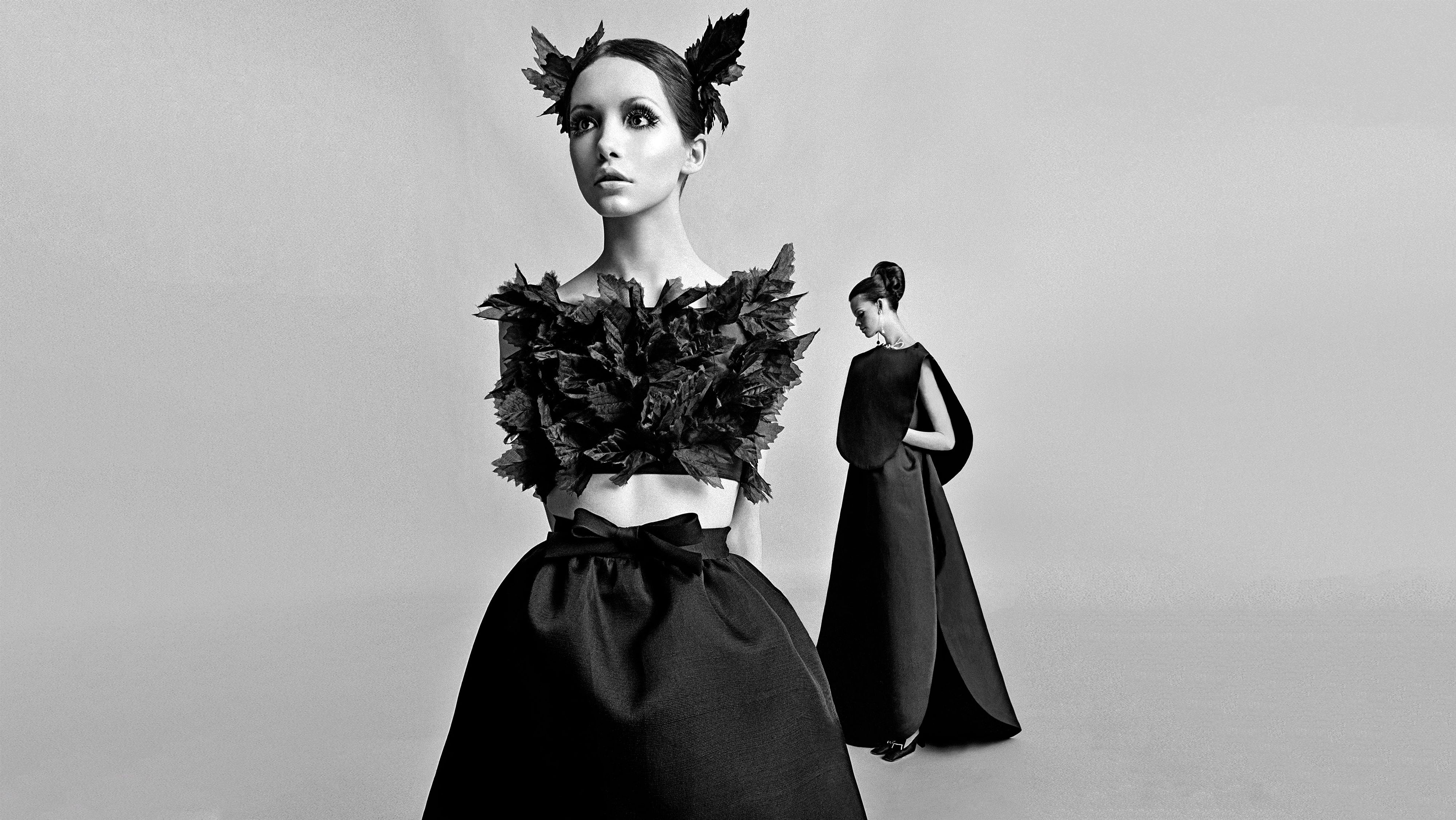
Photo courtesy of SCAD FASH Museum of Fashion + Film.